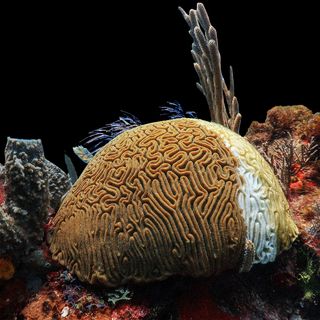Once upon a time, some 100,000 years ago, there was a giant vampire bat. As is evident from the name, it was the largest of all vampire bats, and at least 30% larger than its closest living relative, the common vampire bat.
Scientists recently discovered the fossilized remains of this particular species, called the Desmodus draculae, in a cave in Argentina. They believe the remains could provide important clues about why bats die out eventually and how their evolution in prehistoric times was linked to changing climates.
Why this is also exciting is because, despite bats being extremely diverse and found commonly (they make up about 20% of the known mammal species), fossil records about bats are relatively patchy. Scientists do know that there was a boom of the species around 50 million years ago, but other details of evolutionary evidence and how they diversified have never been fully traced.
This is especially true for D. draculae, first identified in 1988. Some remains have been discovered over the years, allowing paleontologists to draw two conclusions: they lived during the Pleistocene period (about 2,580,000 to 11,700 years ago, also called the Last Ice Age) in Central and South America and died out fairly recently a few hundred years ago.
The significance of the fossils, published in Ameghiniana recently, is notable. The discovered jaw confirms the presence of the species at mid-latitudes and during the Pleistocene… This is one of the oldest records, it is unknown in the Pliocene,” paleontologist Santiago Brizuela of the National University of Mar del Plata in Argentina, told ScienceAlert.
Related on The Swaddle:
Scientists Discover a 308‑Million‑Year‑Old Fossil of a Tiny Dinosaur‑Like Species
Today, there are roughly 1,400 known bat species, of which only three are vampire bats, which live off the blood of other creatures. These three alive species are found in Central and South America: the common vampire bat (Desmodus rotundus), the hairy-legged vampire bat (Diphylla ecaudata), and the white-winged vampire bat (Diaemus youngi). Scientists also believe that all alive, and extinct, species emerged from the same ancestors.
Interestingly, despite the associations of the vampire bats with dracula, D. draculae is not found in Europe, where the origin of the legend is based.
“They are the only family of bats in the world [that] arouses curiosity from the legends of the Transylvania and its creepy Count Dracula,” paleontologist Mariano Magnussen of the Paleontological Laboratory of the Miramar Museum of Natural Sciences in Argentina, said.
However, “in reality, they are peaceful animals that feed on the blood of animals, and sometimes humans, for a few minutes without causing discomfort… The only bad thing is that they can transmit rabies or other diseases if they are infected. Surely their prehistoric representatives had similar behaviors.”
With the current records, paleontologists can speculate more about how bat species lived. Some suspect that D. draculae fed on rodents or deers, others think it could be megafauna, large animals including the sloth that were alive some 1.6 million – 10,000 years ago.
The findings not only tell us how the species lived but also how they eventually died out. One reason could be linked to the depletion of their food — as prey like megafauna became extinct, their chances of survival dwindled too.
But the decline and extinction of D. draculae could also have been fuelled by an inhospitable climate. Researchers believe the climate of the region where the remains were discovered, some 400 kilometers from the Argentinian cave, would have been drastically different 100,000 years ago.




